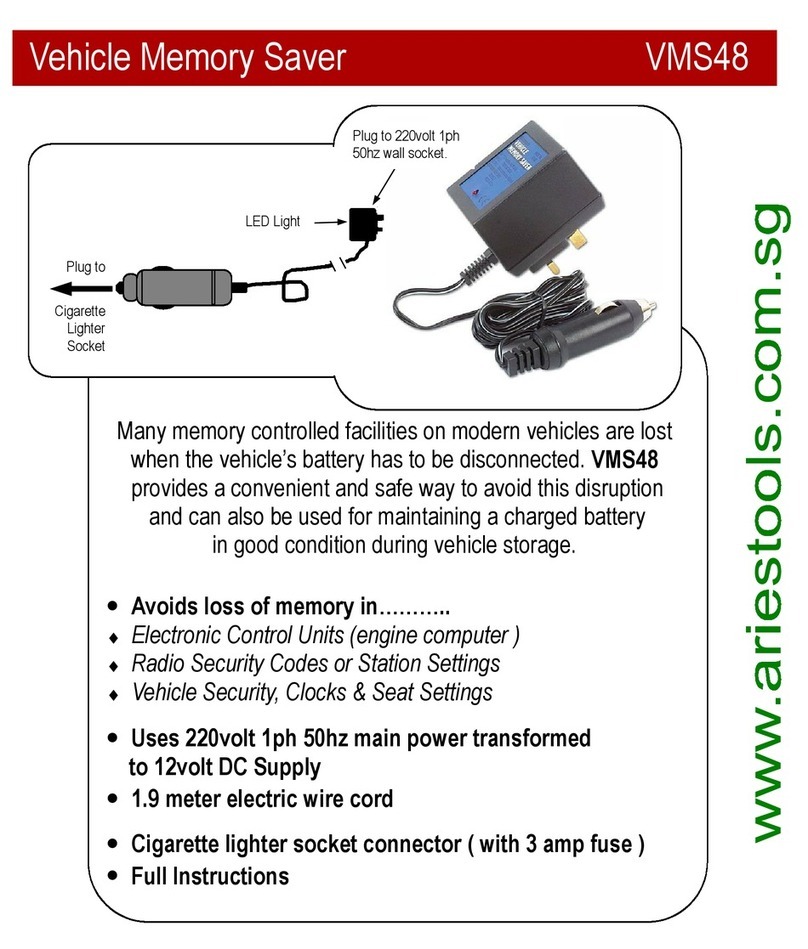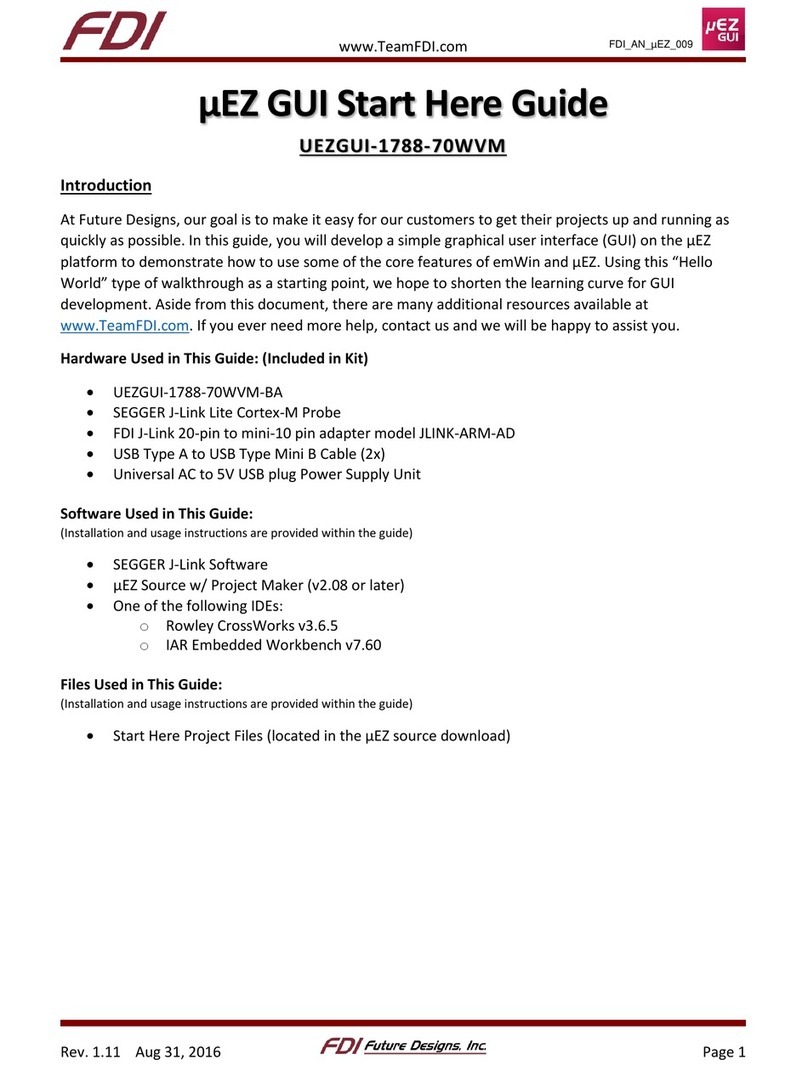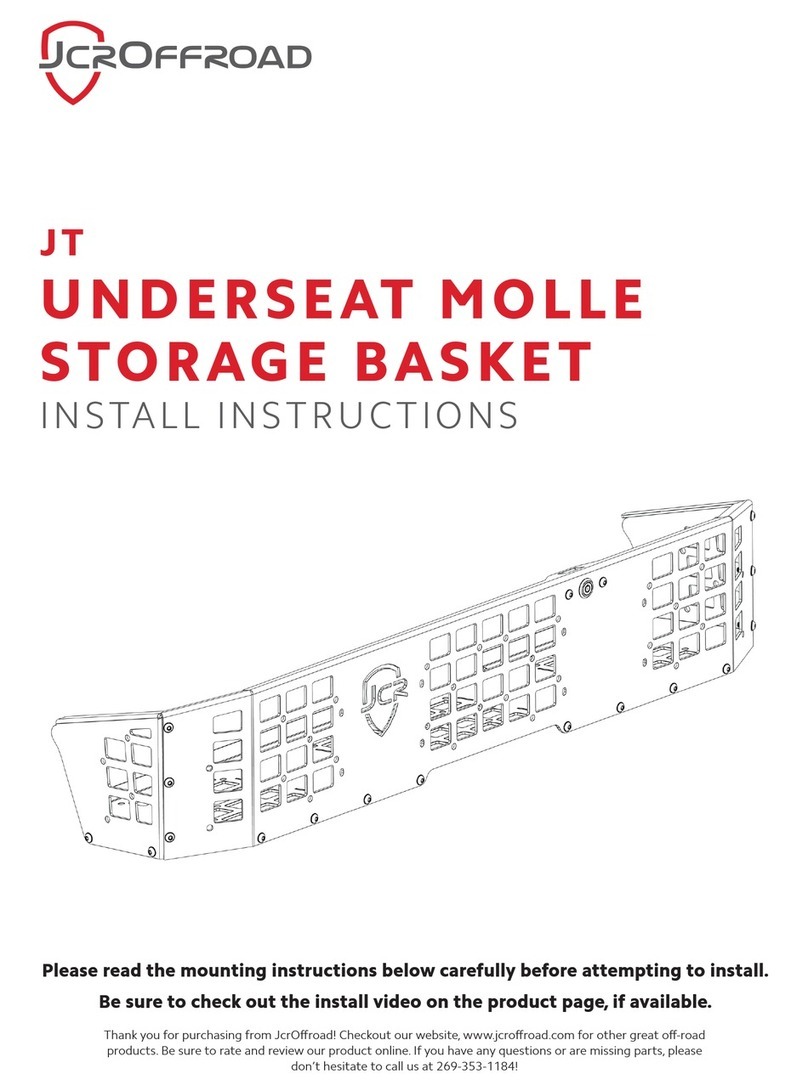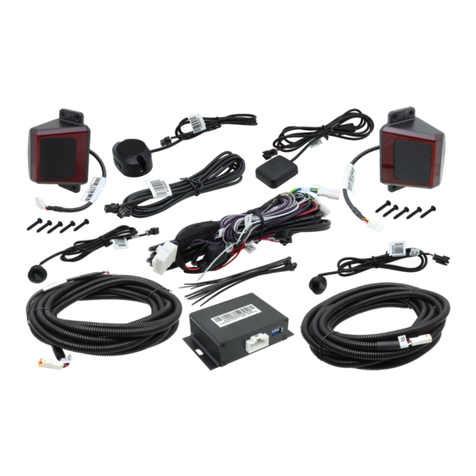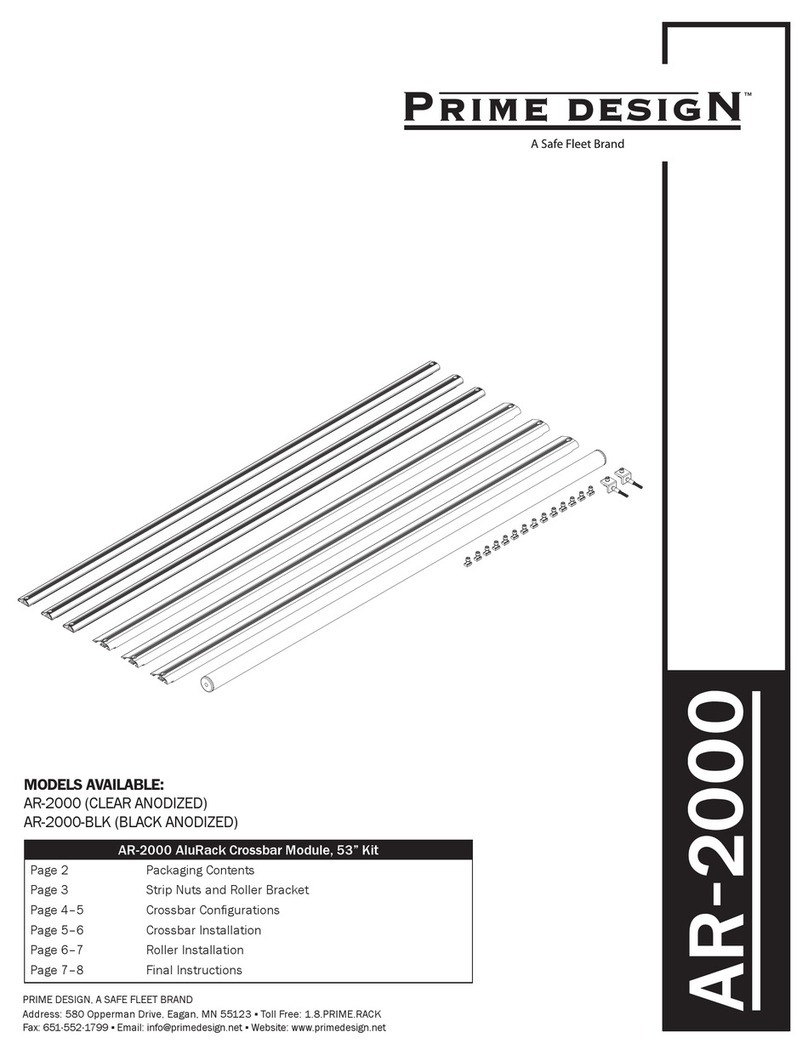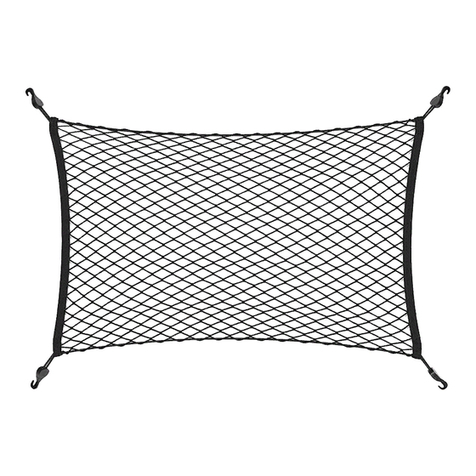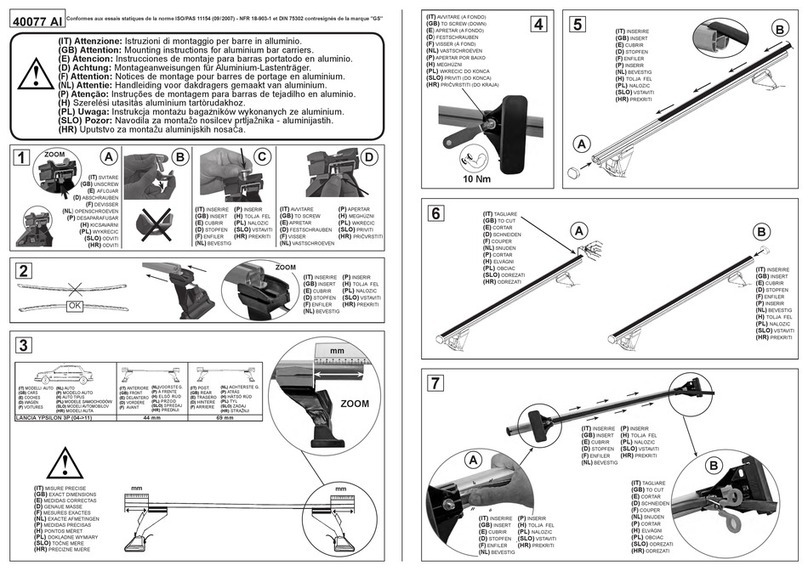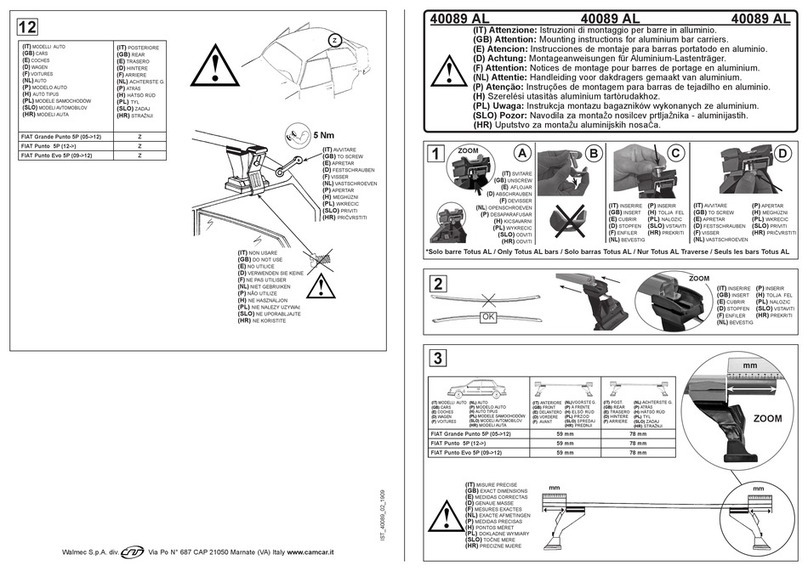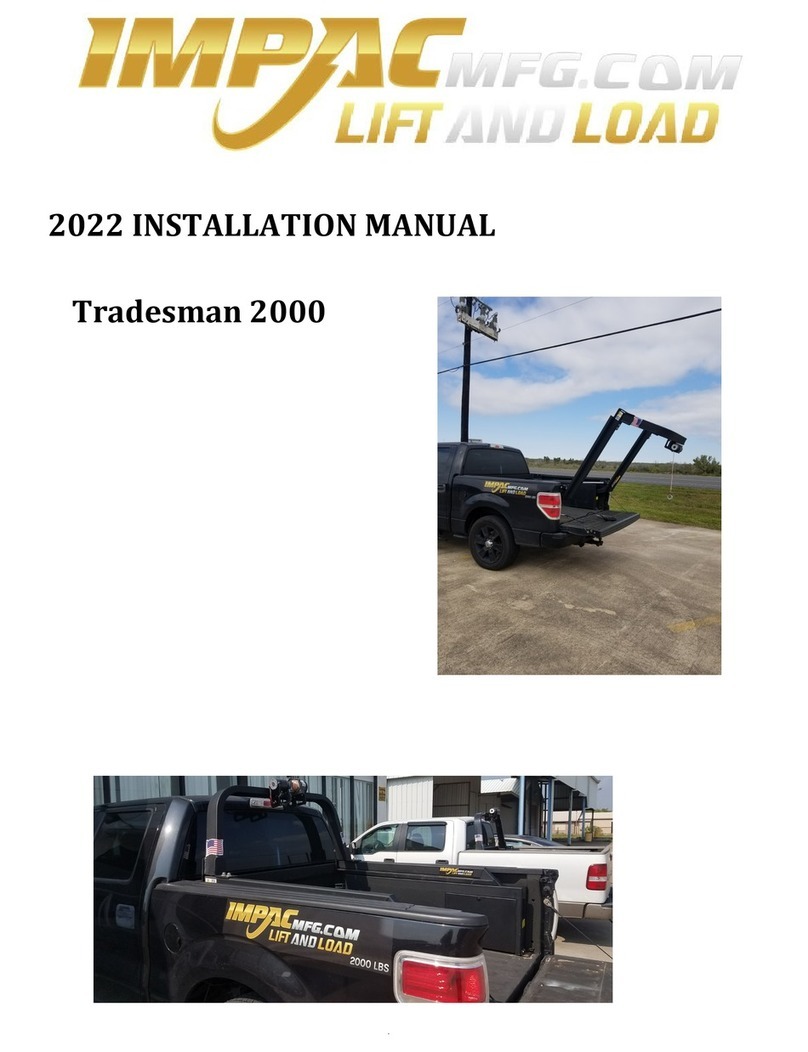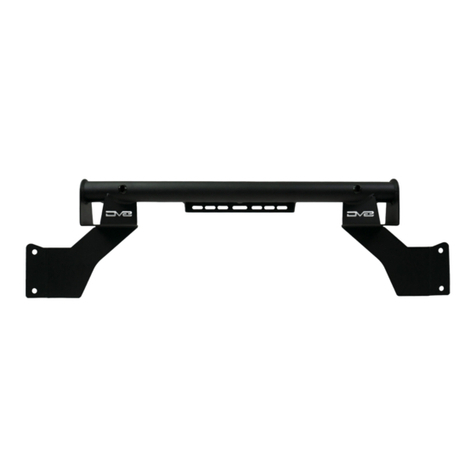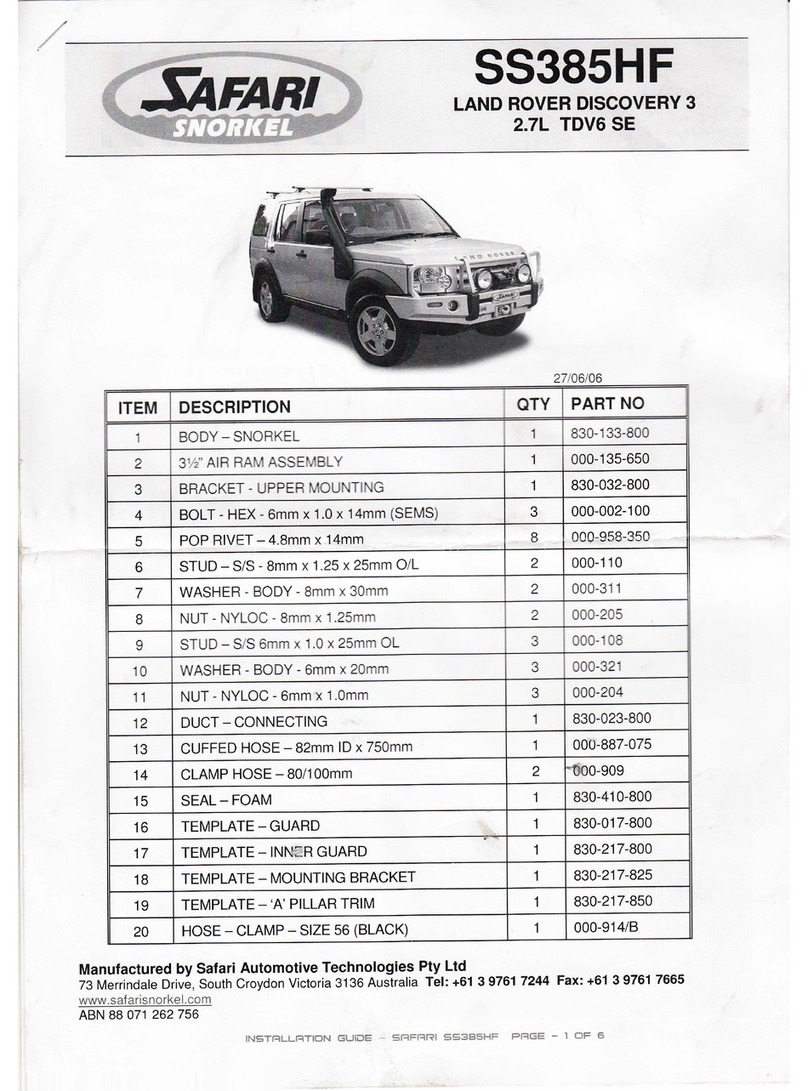Gunson G4062 EEZIBLEED User manual

PPAARRTTNNOOGG44006622
HANDBOOK
AAuuttoommaattiiccHHyyddrraauulliiccBBrraakkee
aannddCClluuttcchhBBlleeeeddeerrKKiitt
EEZIBLEED
If this product fails through faulty materials or workmanship, contact our
service department direct on: +44 (0) 1926 818186. Normal wear & tear are
excluded as are consumable items & abuse.
Guarantee
www.gunson.co.uk

GGuunnssoonnEEeezziibblleeeedd
22
EEZIBLEED
Automatic Hydraulic Brake and Clutch Bleeder Kit
INDEX
Page
1. Contents 3
2. Important Notes 3
3. Instructions for Bleeding Brakes 4
4. Additional Notes 4
5. Divided/Dual Line Systems 5
6. Further hints and tips 6
7. Safety Precautions 6
8. Warranty 7
77
8. Warranty
This warranty is in addition to the statutory rights of the purchaser.
The Tool Connection has made every effort to ensure that this product is of the highest
quality and value to the customer. However, The Tool Connection can accept no
responsibility for consequential damage howsoever caused arising from the use of this
product.
All technical enquiries regarding this product should be made to:
The Tool Connection Technical Service Department: ++44 (0) 1926 818181
Please note that The Tool Connection cannot provide technical information or advice or
service data on particular motor vehicles.
If this product should require service or repair, it should be returned to:
The Tool Connection Technical Service Department,
Kineton Road,
Southam,
Warwickshire,
CV47 0DR,
England.
Please give full details of faults requiring attention when sending goods for service
or repair.
GGuunnssoonnEEeezziibblleeeedd
GGuunnssoonn1100//22000077

66
6. Further hints and tips
Some cars brake systems are very difficult to bleed. A pressure bleeder such as this
invariably gives better results than a non-pressure method such as the conventional two
person method.
The following suggestions include ideas that have been suggested by brake system
manufacturers and other customers.
1. Make sure that the cylinders on all 4 wheels are bled.
2. Always use new brake fluid and do not re-use any brake fluid that has passed through the
system.
3. If the pressure bleeding alone does not work (i.e. the brake pedal remains 'spongy').
Try pressing the brake pedal while the pressure bleeding is in operation (i.e. carry out
pressure bleeding and conventional bleeding simultaneously).
4. Try bleeding the brakes while the car is tilted either forwards or backwards.
5. If the master cylinder has been removed or dismantled for any reason. it may, in the case
of certain cars (particularly Minis) be very difficult to bleed the brakes satisfactorily. In
this case it is necessary to bleed the master cylinder on its own, before fitting the pipes
to it. ensure that it is completely filled with fluid before connecting it to the rest of the
brake system.
6. If any component of the brake system (such as the master cylinder) has been dismantled,
it will be necessary to consider the possibility that the parts have 'been incorrectly
re-assembled or incorrect components have been fitted. Dismantle the part and
start again.
7. The recommended setting of pressure for the device (20 psi) is intended purely as a
guide. In some cases a lower pressure will give adequate flow, possible as low as 10 psi.
In other cases the full pressure of the spare tyre will be better. In some vehicles, a higher
pressure (over 10 psi) is better for bleeding the brakes of the rear wheels.
8. The device will not fit the reservoirs of some cars and indeed, some manufacturers have
been known to fit different types of reservoir to the same model of car. It will not fit
Nissan. Honda and some Toyota. There are several ways of overcoming this problem.
One way is the Multipurpose Cap which is held to the reservoir by means of a strap which
passes beneath the reservoir. Another method is to buy a spare cap and drill a 10mm
hole in it. Where the cap has a removable centre it is possible in some cases, to make a
disc with a 10mm hole and temporarily fit this to the car's normal reservoir cap.
If you have any other suggestions on the use of this product we would be happy to hear
from you.
7. Safety Precautions
• Read the instructions carefully.
• Be aware that brake fluid contains chemicals which are corrosive and can be an irritant.
• Keep Brake Fluid out of the reach of children.
• Brake Fluid can be harmful if swallowed. If this happens consult a doctor (or hospital
out-patients department). Show them the original container in which the brake fluid
is sold.
• Avoid skin and eye contact with the fluid. If this happens flush with water.
• If fluid splashes on vehicle paintwork rinse off at once with plenty of water.
• Wear a pair of protective goggles.
• Keep a bucket of water near where you are working.
GGuunnssoonnEEeezziibblleeeeddGGuunnssoonnEEeezziibblleeeedd
33
The caps in the Kit should suit the majority of European
and Overseas vehicles with screw-on caps.
1. Contents
1 x Bottle
1 x Bottle cap assembly with tyre connector
3 x Hose set – 3.5mm x 303mm, 5.4mm x 303mm, 5.4mm x 183mm
1 x 25mm cap and seal for Lockheed systems.
1 x 27mm cap and seal for VAG
1 x 44/45mml plastic cap and 2 seals for metal Girling and all ATE systems.
(For 44mm use thin seal/For 45mm use thick seal).
1 x 46mm cap and seal for some Girling systems.
Other caps are available should these not fit the vehicle’s reservoir
2. Important Notes – Please read before continuing
A. Before using this device the system should be pressure tested at a slightly higher
pressure than used for bleeding - without fluid in it.
B. It is recommended that no more than 20 psi is used for bleeding.
C. The Pressure Vessel cap should not be over tightened. Make sure the seal is flat in the
cap before use. Screw the cap on until contact with the seal is felt then no more than
'1/8” turn more.
D. Fresh fluid of the correct grade should be used.
E. Dirt. cleaning solvents. mineral oils or water will damage or impair the performance
of your brakes or clutch. Contact with these substances should be avoided.
F. You will need a container to catch the fluid drained from the system.
A wide based jar is ideal.
FFiigguurree11
CClleeaarrTTuubbee
BBrraassssFFiittttiinngg
((GG44006622//0066))
WWaasshheerr((GG44006622//4433))
AApppprroopprriiaattee
CCaapp&&SSeeaall
WWaasshheerr((GG44006622/
/4433))
LLoocckkNNuutt((GG44006622//4400))

• When the brake adjustments operates on one end of the shoe this should be tightened
before bleeding to return the cylinder to a closed position.
• Always open the bleed nipple fully when using the device to ensure that there is no
restriction, this will allow the cylinder to return to the closed position as (unlike when
using the pumping method) air cannot be sucked back in.
5. Divided/Dual Line Systems
Tandem master cylinders.
Some systems require that both lines be bled simultaneously (usually one front and one
rear wheel). In this case open both nipples and control the flow by
connecting/disconnecting the tyre connector.
Tandem reservoirs, and slave servo.
Consult the manufacturer's manual to determine which reservoir feeds the master
cylinder and which the slave servo.
Vacuum Servo.
Exhaust the servo before connecting the device by repeated application of the brakes
without the engine running, unless otherwise advised by the vehicle's manufacturer.
The instructions below also apply when bleeding the hydraulic system which operates the
clutch. However, since there is usually one bleed valve located on the slave cylinder, it is
only necessary to release this to bleed out the air after fitting it to the master reservoir.
Should the level of fluid in the pressure vessel approach the line marked near the bottom
at any time, disconnect the air line from the road wheel and refill the vessel with clean
fluid. Reconnect the air line and carry on with the procedure. The vessel should be kept
as vertical as possible.
Finally, release the pressure from the device by removing the connector from the road
wheel BEFORE removing the cap from the reservoir.
Where the Special Screw Caps still do not cater for a particular reservoir opening, good
use of the device can still be made by the following method.
1. Drill a 3/8”(IOmm) hole in the existing cap on the vehicle reservoir.
Where a vent hole is provided this should be blocked from inside the cap or the drilling
should be made through it.
2. Link this drilled out cap into the system using the brass fittings provided (as illustrated).
3. Use the spare wheel at a reduced pressure of no more than 20 psi and proceed with the
bleeding operations. It is even more important if using this method, to assure yourself
before introducing the fluid into the pressure vessel, that you have an airtight seal at all
points. Pressures as low as 10psi can usually be quite satisfactorily
4. After the job is done the hole in the Reservoir cap can be closed by means of a
3/8”(10mm) blanking plug (pierced to ensure that there is a clear air hole) which most
accessory shops sell very cheaply.
Although the device can be used on most Renault models those with "Stop" brake
systems may not be fitted with the caps in this kit and often have very thin walled
reservoirs. It should be possible to use the device however, with a much reduced
pressure in the spare wheel by the above recommended method.
55
GGuunnssoonnEEeezziibblleeeedd
44
G. Brake fluid is harmful to paintwork. To avoid damage ensure the Pressure Vessel and
container catching the old fluid is placed safely and vertically and away from paintwork.
Also that caps are screwed on sufficiently (without over tightening) to seal correctly.
H. Brake shoes are usually adjusted before bleeding. Consult your handbook for
maker's recommendations.
3. Instructions for Bleeding Brakes
1. Remove the vehicle's reservoir cap and select the appropriate screw cap and connect it
to the device as shown in the diagram (Figure 1). Then connect to the reservoir.
2. Check the pressure in the tyre to be used for bleeding and connect the tyre
connector. Pressure test the system for air leaks at the reservoir cap etc.
3. Cure any leaks before proceeding. To reduce the amount of fluid used in replacing all the
fluid in the system, partially drain the vehicle's reservoir by opening one bleed nipple, at
this point. This reduces mixing of old and new fluid.
4. If all seals are airtight. Disconnect the tyre connector and fill the pressure vessel
with fluid.
5. Replace the pressure vessel into the system placing it so that it will remain vertical and
not be disturbed during bleeding.
6. Pressurize using the spare wheel at 20 psi. max. by connecting the air line to the
tyre valve. (This pressure should not be exceeded for efficient bleeding).
7. Connect the bleed tube to the bleed nipple furthest from the master reservoir (as in the
sequence usually found in the handbook).
8. With the correct size spanner, open the bleed valve until the fluid caught in the container
is clean and air free. Then retighten the valve. It is important to open the valve sufficiently
to ensure there is no restriction at that point.
9. Repeat the operation on all the valves in sequence.
NOTE: The pressure vessel should hold enough fluid to complete the bleeding
operation. If the level in the pressure vessel approaches the minimum level line,
disconnect from the tyre and refill, proceed again.
10. When all the brake lines have been bled in this way, disconnect the air line from the wheel
BEFORE removing the cap from the master reservoir.
11. Finally replace the master reservoir cap after making sure that the air hole is clear.
4. Additional Notes
On some uncommon Brake Systems.
If the outlet from the master cylinder is not above the inlet it is possible for a pocket of air
to remain. Most of this will be removed by pumping the pedal but the best way is to raise
one end of the vehicle to ensure that the outlet is at the highest point. (The pedal can still
be pumped once or twice during bleeding with the device, if raising the vehicle is
not possible).
Whether bleeding by conventional or pressure methods the following tips may be of
assistance in difficult cases:
• If the bleed nipple is not at the top of the wheel cylinder, it is necessary to ensure that the
cylinder is in the closed position during bleeding i.e. When the brake adjustment acts in
the centre of the shoe this should be released before bleeding to allow the cylinder
to return.
GGuunnssoonnEEeezziibblleeeedd
Table of contents
Other Gunson Automobile Accessories manuals
Popular Automobile Accessories manuals by other brands
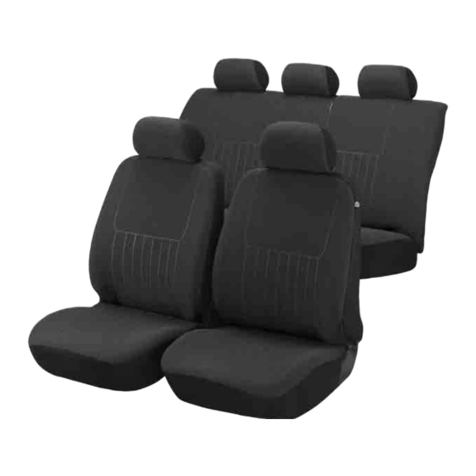
ULTIMATE SPEED
ULTIMATE SPEED 279746 Assembly and Safety Advice

SSV Works
SSV Works DF-F65 manual
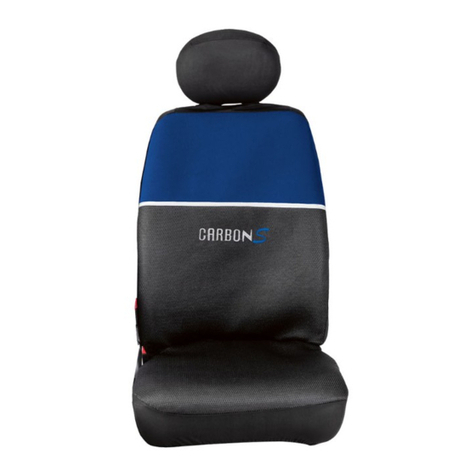
ULTIMATE SPEED
ULTIMATE SPEED CARBON Assembly and Safety Advice
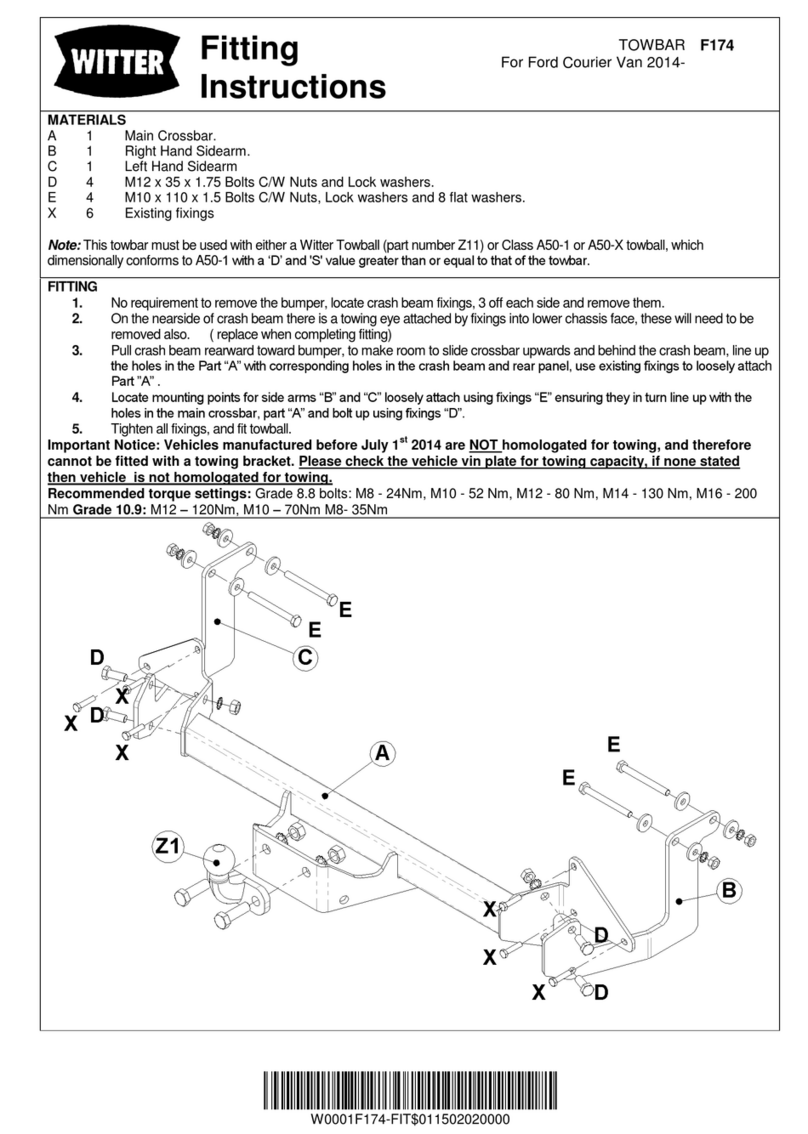
Witter
Witter F174 Fitting instructions
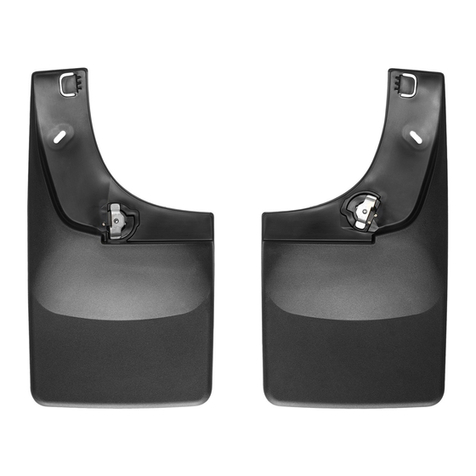
WeatherTech
WeatherTech No-Drill installation instructions
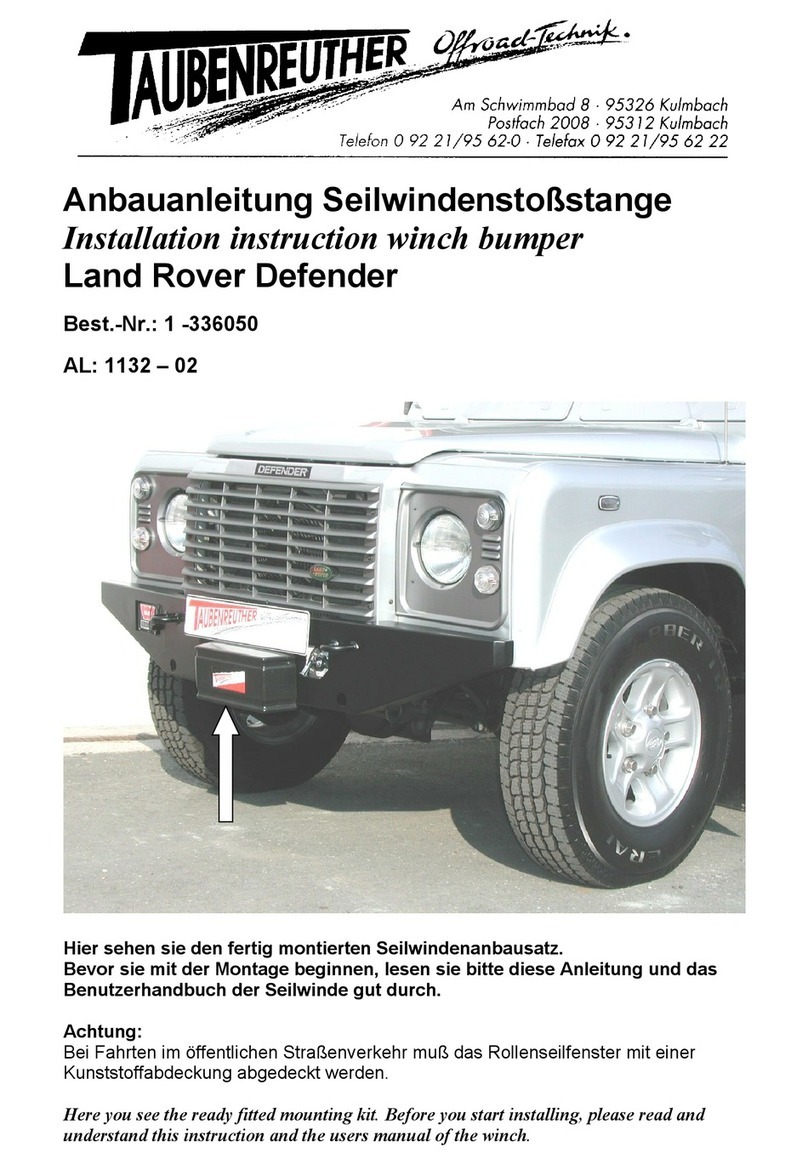
TAUBENREUTHER
TAUBENREUTHER 1-336050 Installation instruction
